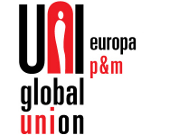Improving well-being improves absenteeism

Improving well-being improves absenteeism
Reasons for absenteeism can be difficult for businesses to uncover but the cost of remaining in the dark is significant.
While most employers agree that reducing absenteeism is critical to their business this is often easier said than done and many struggle to implement sensitive or effective absence monitoring and management policies successfully.
Absenteeism can cost manufacturing companies a great deal, and yet, according to the British Chartered Institute for Personnel and Development (CIPD)’s 2011 Absence Management Survey, only one-third (32%) of manufacturing companies monitor the cost of absenteeism, with those who did reporting a median cost of £444 per employee per year.
When this figure is multiplied by the number of employees, in even a medium-sized manufacturing company, it can mount up costs running into hundreds of thousands of pounds.
Ugly baby
Neville Henderson, a consultant at Crown Computing, notes: “The underlying issue is that absence management is something of an ‘ugly baby’ that people are uncomfortable talking about, and often slips under the management radar. One reason for this is the lack of adequate attendance monitoring systems.
“However, even when attendance data is collected, there is often a risk of it simply being swallowed up in a sea of statistics. Few companies have the tools to analyse and present the myriad of data they collect in an accessible, actionable way, and workforce information is no exception.
“The result is that not only can absenteeism and its impact on the bottom line go largely undetected, but the underlying causes may be missed, and with that the opportunity to remedy these for the benefit of all parties concerned.”
Reasons for absenteeism
Illness is the reason for most missed days at work, but the 2011 CIPD survey revealed that non-health related absences were still among the top five causes of absenteeism.
Home and family responsibilities figure highly among these, confirming anecdotal evidence that in more conservative companies, unplanned absence is often the only way many professionals and managers, like other employees, feel they can deal with such matters.
Where employers are less focused on the traditional 9-to-5 work day, where more flexible options can be made available, this helps to offload not only the individual concerned but also the team and the business as a whole.
Stress is another highly-rated cause of absenteeism, according to the 2011 CIPD survey, where frequent occurrence of sickness-related absences and overtime go hand in hand. So, for instance, companies with lots of seasonal demand variation can be ‘breeding’ stress-related absenteeism during peak times, as they have to ask their staff to put in a lot of extra hours at short notice.
How an organisation covers absences can also create a dangerous reversal of motivation. If the policy is to ask colleagues to cover for absent workers by putting in overtime this can inadvertently incentivise absenteeism.
In these scenarios, organisations not only need to revise their procedures for covering absences – for instance by spreading workload across teams or by shifting team members – they also need to implement mechanisms that improve well-being and create a culture that accepts and effectively manages genuine absence and challenges ‘duvet days’.
Tracking absenteeism
One of the fundamentals of tackling absenteeism is to understand the attendance requirements of the business by analysing demand patterns and then scheduling staff working time for when it is actually needed.
Flexible working schemes such as annualised hours do exactly that, rather than allowing companies to fall into the old trap of ‘painting the factory’ when demand is low only to then enforce weeks or months of overtime when it peaks.
For example, at a medical products manufacturer with heavily fluctuating demand and overtime patterns, annualised hours were introduced after a thorough analysis of workforce management data.
During times of flat demand, employees had Fridays off. At peak times, they had to work longer hours all week instead. The company’s workforce IT system enables managers to optimise shifts and keep on top of everyone’s working time. In addition to making a significant impact on the bottom line – thanks to reduced overtime payments and wastage – the company also noted that staff were happier and more motivated thanks to increased flexibility.
In conclusion, a two-pronged approach is needed to tackle the perennial issue of absenteeism: not only must organisations be open to becoming more flexible in the way they work, they must also need to seek to align the interests of employee and employer more strongly.
In order for both aspects to work, companies should not shy away from deploying automated systems – and using their capabilities to their full. The benefits to be reaped are not just a ‘big brother’ view of the workforce, but also greater fairness and consideration of the needs of individual workers.
Neville Henderson will be speaking at The Manufacturer’s Flex for the Future event in London on 5 July. The event will investigate flexible working strategies for manufacturing companies and give updates on workforce regulation. Other industry contributions will come from: Aimia Foods, BAE Systems, General Motors, and Vernagroup. UNI’s British affiliate, Unite the Union, will also be making a contribution.
For further information visit: http://www.themanufacturer.com/eventsite/flex-for-the-future-conference-2012/#home_

